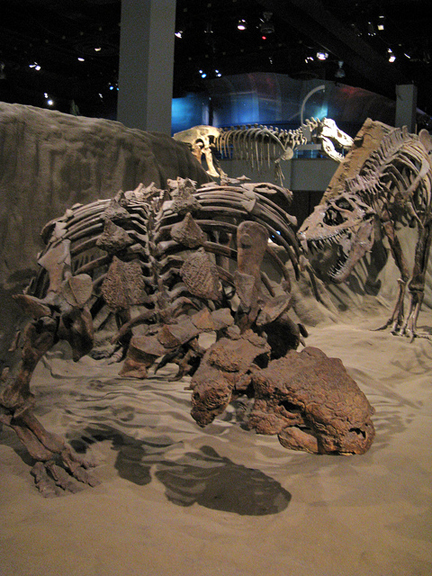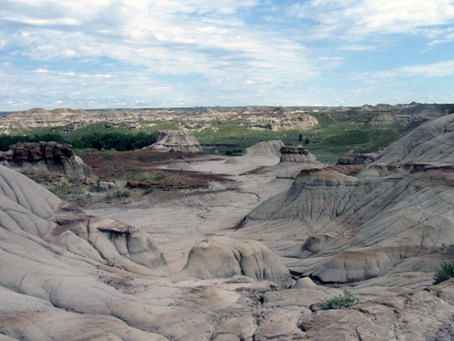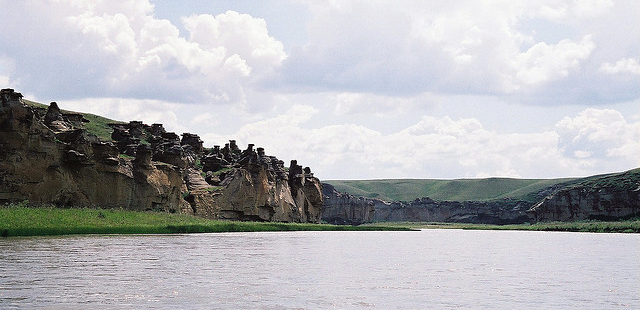Trackways #19, Winter 1999–A nearly complete Cretaceous-aged turtle has found its way to the Royal Tyrrell Museum. Not only are its skull, skeleton and shell intact, but its body cavity contains additional treasure: turtle eggs.
“The preservation of this specimen is remarkable,” says Museum palaeontologist Don Brinkman, who studies Cretaceous turtles. “Of all the turtle specimens found all over the world, there is only one other I’ve heard of that may also contain eggs.”
Found by Museum technician Wendy Sloboda in the remains of an ancient mud-filled channel, the turtle’s bones escaped reworking and scattering by scavengers and water currents. The specimen is Adocus, an extinct relative of today’s soft-shelled turtles. Seventy million years ago, it swam in freshwater streams and ponds, ate fish, frogs and salamanders, and likely came ashore to lay its eggs on warm, sandy beaches. However, this individual died before laying its eggs: its body is filled with dozens of eggs compressed by burial.
“We have more research to do before we learn all this specimen can tell us,” Brinkman says. “At the very least, we now know for sure that Adocus laid eggs and what Adocus eggshell looks like. This will help us identify in the future when we find shell fragments in the field.”
© Royal Tyrrell Museum of Palaeontology 1999




